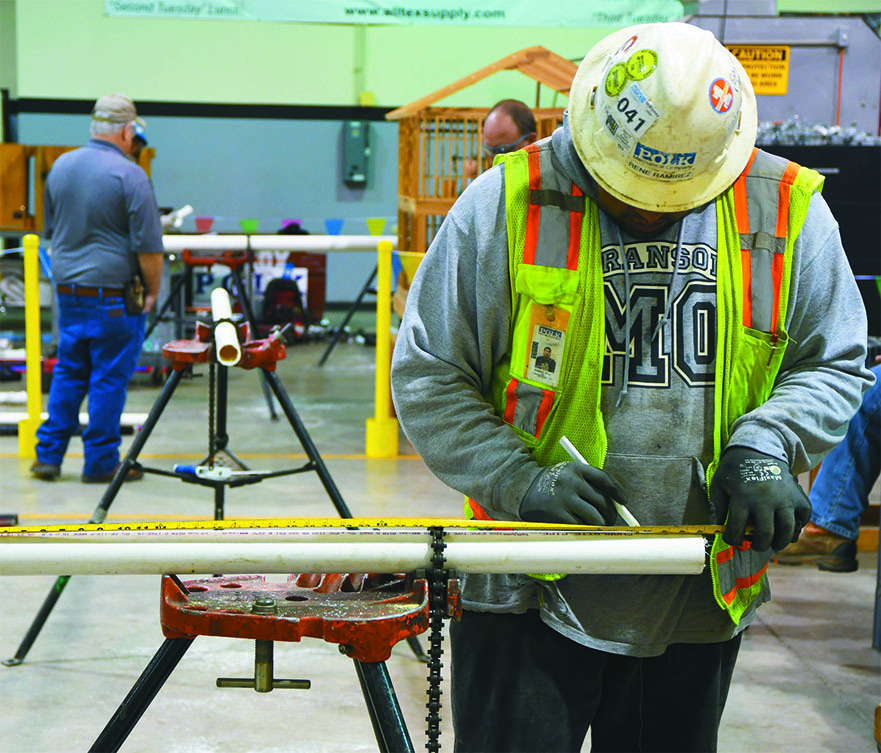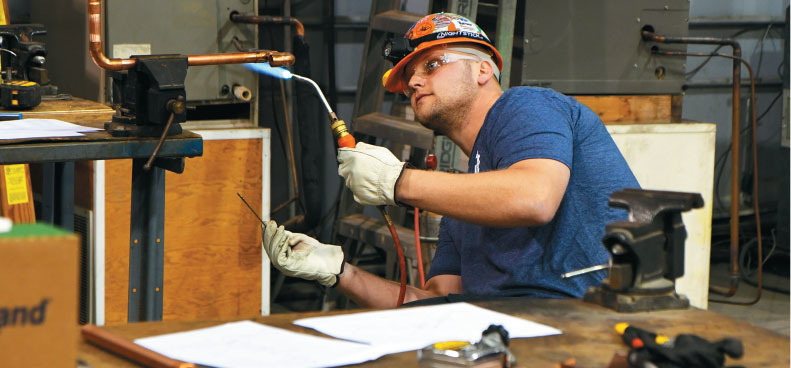
DIRECTOR OF CTE DEVELOPMENT & CRAFT TRAINING

Many business professionals sit around conference room tables everyday wondering how they are going to entice people to enter their industries workforce. Countless hours have been spent talking about how companies will never find the quality of skilled workforce that once existed. Let’s be honest – the industry will tell anyone that will listen about the lack of qualified individuals our workforce has while millions of positions remain available. Unfortunately, there are many stigmas that seem to haunt the industry. Such stigmas include the average age of the craft professional, the long labor-intensive workdays, questions of safe work environment, and the amount of time and training it takes to become a qualified craftsman.
The good news, however, is that the stigma of the average craft professional being in their 60’s has started to decrease and the number of skilled professionals entering the workforce is steadily increasing. In January 2020, the U.S. Bureau of Labor Statistics reported that in 2019, the average age of the Construction Craft Professional is now 42 years old, which is nearly a 20-year decrease. It is apparent that we are doing something right as younger individuals are now joining the industry. How exciting! With the good news also comes bad: It does not seem like we are attracting enough of those younger individuals to grow and fill the positions that are still currently vacant.
Currently on Indeed.com, there are over 1,800 Construction Craft Professional job advertisements needing applicants. Right now we are in the middle of a pandemic, an uncertain time that has left numerous people in different types of professions either furloughed or laid off completely. Thanks to TEXO and its partners, the Governor considers the construction industry essential. Does being essential look more attractive for the generation that we are trying to attract? I would say so. It shows that the industry is something that is certain and that there is a level of job security that may not be found in other professional fields. Build Your Future (BYF.org) reports that the United States will need an additional 9.5 million craft professionals by 2022. Data shows that Texas will need an additional 1.6 Million Skilled Professionals alone, which makes up 17% of the National average. Can the construction industry attract that many new individuals into our workforce?

The National Center for Construction Education and Research (NCCER) was developed in 1996 with the support of more than 125 construction CEOs and various association and academic leaders who united to revolutionize training for the construction industry. Sharing the common goal of developing a safe and productive workforce, these companies created a standardized training and credentialing program for the industry. This progressive program has evolved into curricula for more than 70 craft areas.
Currently, 37% of the industry-based certifications that are being offered to Texas students are NCCER Certifications. If craft professional training has been around for a quarter of a century, is the younger average just luck? Or could the decreased average have something to do with the types of craft professional training being offered?
For those craft professionals that went through a formal apprenticeship program, they probably remember going to school two or three nights a week for three hours a night after an eight-hour workday. These long workdays created an uneven work-life balance with little time to spend with friends or families. These long hours and time spent away from family did not make our industry very attractive. It wasn’t until the past few years that craft professionals had the option to participate in online training. Now, not only are there an abundance of online resources for our industry, but there is also augmented reality which gives one many options to learn from.


With the current resources and new attractiveness of our industry proving to be essential, we can certainly put a dent in the 1.6 million craft professionals needed in Texas. We do this by introducing the opportunities in our industry to elementary, middle, and high school students. Currently, TEXO is working with over 3,700 high school students, and a couple hundred middle school students throughout 69 different districts. Approximately 80% of those students will graduate high school with some type of construction industry certification. These programs give these students many opportunities following graduation. Some of those students will continue their education and enter a collegiate level construction program, others will enroll in a formal apprenticeship program, and the rest will be able to start entry-level jobs.
The key thing to remember is that after these programs are completed, these students graduate high school having earned their diploma and their National Center for Construction Education and Research (NCCER) credentials. This scenario sounds a lot like college credit doesn’t it? That’s because those NCCER credentials that are being earned in high school can be transferred to most accredited colleges. Wouldn’t your company be interested in hiring someone with experience right out of high school?
Fortunately, the Texas Educational Agency (TEA) recognized the opportunities that exist for their recently graduated high school students in the construction industry. Not only are there numerous job opportunities available within the Texas construction workforce, but the earning opportunities are far more exceeding than other degreed and non-degreed careers. Last August, TEA released their 2019-2020 Industry-Based Certifications, which included many different types of construction certifications. There were a total to receive their credentials in the construction industry while working towards their high school diploma.

Under the Texas Education Code (TEC), a school district is eligible to receive funding for each eligible full-time student in attendance in an approved CTE program. The schools then receive additional funding for every certification that the students complete. How is TEXO helping? Together with TEXO Foundation, Construction Education Foundation (CEF) and NCCER, we are assisting schools with setting up approved CTE programs utilizing the NCCER curriculum.
These programs will play a pivotal role when it comes to filling the void in the construction workforce. By educating students at a younger age, not only does it give them a competitive advantage in the workforce, but it also eliminates the long workdays creating a more balanced work-life. These resources, if used properly can help change the perception of the construction industry into one that that is much more appealing than it has in the past. After all, if it wasn’t for this industry, where would we be?




